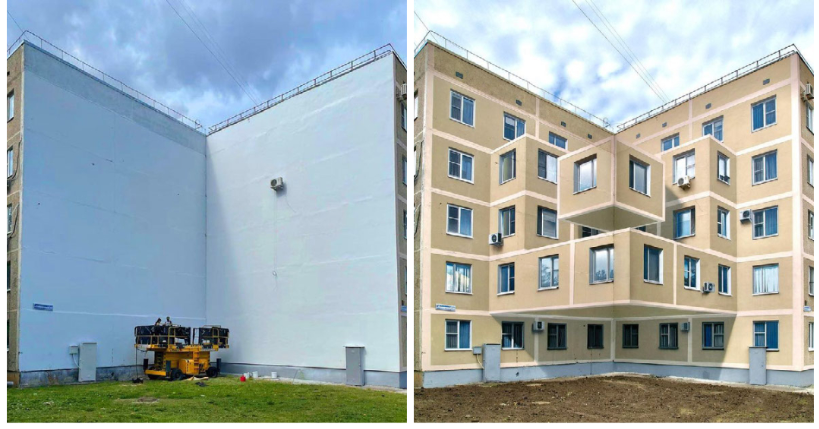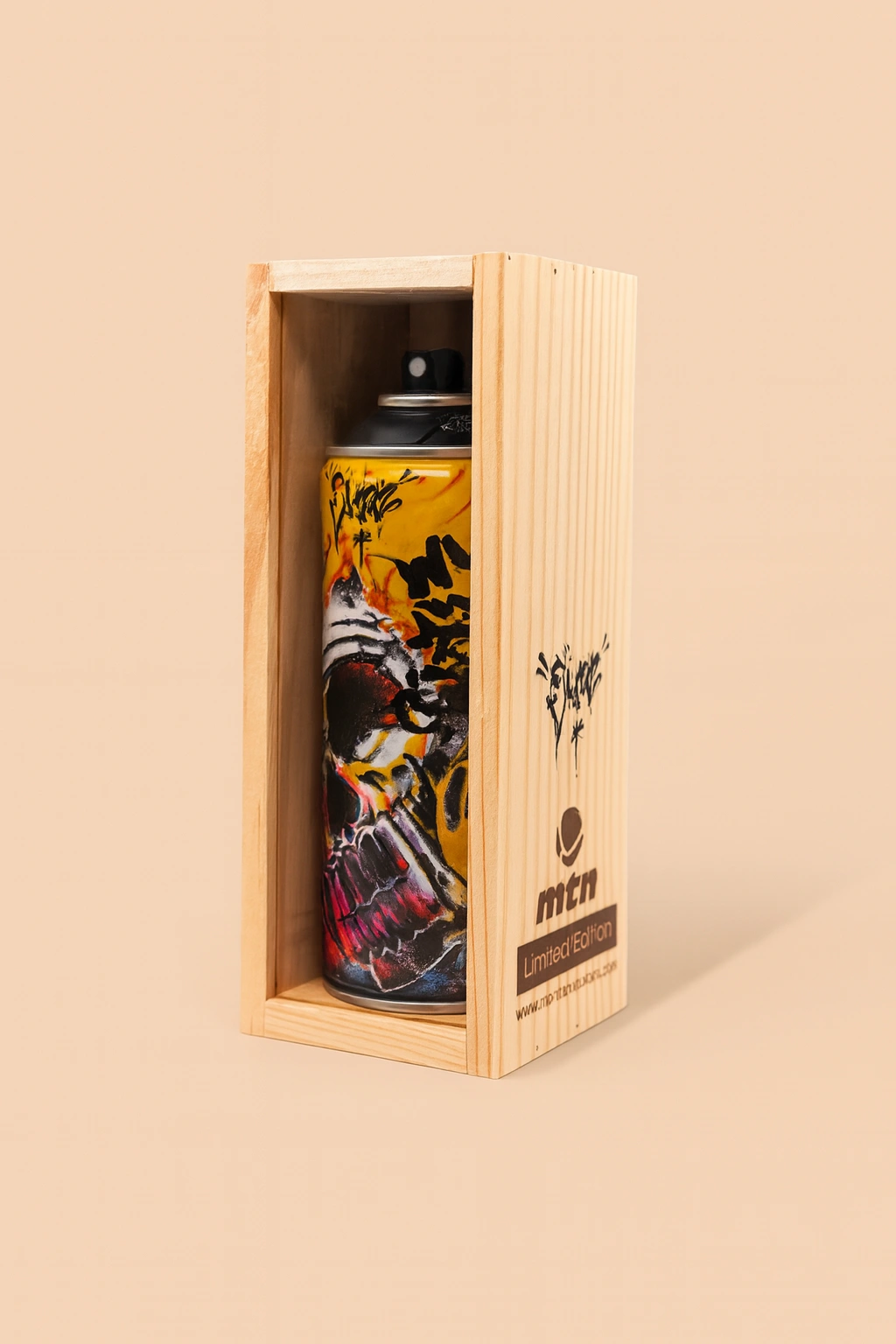The world of street art has long been a canvas for creativity, rebellion, and social commentary. Over the years, artists have pushed the boundaries of what is possible on walls and buildings, using their work to engage and provoke those who pass by. One of the most revolutionary techniques that have recently taken street art to new heights is optical illusion, and no one does it better than the artist Shozy. With his latest mural, Shozy has not only blurred the lines between art and reality but has also introduced a whole new way to experience public art. This stunning optical illusion mural doesn’t just make you stop in your tracks—it changes the way you see the world around you.
The Emergence of Optical Illusions in Street Art
Before diving into Shozy’s masterpiece, it’s essential to understand the history of optical illusions in street art. Optical illusions, in general, have been around for centuries. Whether through clever use of geometry, perspective, or light and shadow, artists have long been fascinated with the idea of creating images that trick the mind. The works of Escher and other artists have played with our perceptions, challenging our understanding of space and form. However, street art is a relatively new arena for this kind of illusionistic work.
Optical illusions in street art gained widespread popularity in the early 2000s, largely due to artists such as Edgar Müller and Julian Beever. These artists became famous for creating breathtaking 3D chalk drawings on sidewalks and streets, where a two-dimensional drawing would appear to leap off the pavement and into real life. Müller’s giant crevasses, for example, looked like they could swallow anyone who dared walk too close.
However, Shozy has taken this art form in a new direction, building on the foundation laid by his predecessors but with his own signature style and technical prowess. His use of color, form, and placement transcends the typical 3D illusion. His murals don’t just surprise—they inspire awe and deep reflection on the relationship between space, reality, and the viewer’s perception.
The Artist: Shozy
Shozy, a rising star in the street art world, has always been fascinated by how people interact with their environments. Originally trained in traditional fine art, Shozy transitioned to the streets after realizing that the raw, uncurated space of urban landscapes allowed him to experiment more freely with large-scale designs and interactive elements. His background in graphic design and architecture has deeply influenced his approach, resulting in murals that are not just visually appealing but also structurally complex.
Shozy’s philosophy centers around the idea of transformation—how a seemingly mundane urban environment can be transformed into something magical, otherworldly, and thought-provoking. His murals invite viewers to reconsider their surroundings and question their perceptions. While many street artists work within the confines of the physical space they are given, Shozy manipulates this space, turning flat surfaces into windows into alternate realities.
The Mural: A New Dimension in Street Art
Shozy’s latest optical illusion mural is located in a bustling urban district, where foot traffic and vehicular activity ensure that it is seen by thousands of people every day. The mural is massive in scale, covering the entire side of a five-story building. From a distance, the mural appears to be a simple geometric pattern, perhaps a collection of cubes and lines overlapping one another in various shades of blue and gray. But as you approach, the mural begins to shift and change before your eyes.
Upon closer inspection, the geometric shapes morph into a 3D vortex, as if the building itself is being pulled into another dimension. The cubes, once flat, now appear to be protruding from the wall, creating a dizzying sense of depth and movement. The closer you get, the more you feel like you’re about to be sucked into the vortex yourself. The edges of the building seem to blur, and the lines between what is real and what is painted become nearly impossible to distinguish.
This transformation is not just a trick of the eye—it is a carefully calculated manipulation of perspective. Shozy uses a technique called anamorphosis, where a distorted image appears normal only when viewed from a specific angle. As you move around the mural, the image changes again, offering new angles and experiences at every step. The illusion works so well that many passersby stop in their tracks, unsure whether they are looking at a flat wall or a physical structure coming to life.
The Technical Prowess Behind the Illusion
The mural is a testament to Shozy’s technical abilities as much as his artistic vision. Creating an optical illusion of this magnitude requires not only an understanding of traditional painting techniques but also a mastery of geometry, perspective, and spatial awareness. Shozy meticulously planned every detail of the mural, starting with digital sketches that allowed him to map out the angles and distortions needed to achieve the final effect.
One of the most impressive aspects of the mural is its seamless integration with the building’s architecture. Shozy used the natural lines and curves of the building to enhance the illusion, making it feel as though the mural is a part of the structure itself. The windows, doors, and other architectural features are cleverly incorporated into the design, further blurring the line between reality and art.
The color palette is another crucial element in the mural’s success. Shozy chose a limited range of cool blues and grays to create the illusion of depth and shadow. These colors not only contribute to the three-dimensional effect but also create a sense of calm and tranquility, contrasting with the dynamic movement of the shapes. The result is a mural that feels both energetic and serene, drawing viewers in while also inviting them to pause and reflect.
A New Way to Experience Street Art
Shozy’s mural represents more than just a technical achievement—it is a statement about the evolving nature of street art and its place in the urban environment. Traditionally, street art has been viewed as a form of rebellion, a way for artists to reclaim public spaces and challenge the status quo. While this spirit of rebellion still exists, artists like Shozy are pushing the boundaries of what street art can be, transforming it from a form of protest into a form of interaction and engagement.
This mural, in particular, challenges the viewer to rethink their relationship with space and reality. The optical illusion is not just a visual trick—it is a metaphor for how we perceive the world around us. In an age where digital technology allows us to manipulate images and reality in ways that were once unimaginable, Shozy’s mural reminds us that our perceptions are not always as reliable as we think.
The mural also offers a new way to experience art. Unlike traditional art forms that are confined to galleries and museums, street art is accessible to everyone. Shozy’s mural doesn’t just invite viewers to look at it—it invites them to engage with it. The optical illusion only works if the viewer moves around the space, experiencing the mural from different angles and distances. This level of interaction is rare in the art world and speaks to the power of street art to democratize the experience of art.
Impression
The impact of Shozy’s mural on the local community has been profound. The mural has quickly become a landmark, attracting visitors from all over the city and beyond. Local businesses have reported increased foot traffic, as people come to see the mural and stay to explore the surrounding area. The mural has also sparked conversations about the role of public art in urban spaces, with many residents expressing pride in having such a stunning work of art in their neighborhood.
Beyond its economic and social impact, the mural has also had a deeper, more personal effect on those who see it. For many, the mural is more than just an optical illusion—it is a reminder of the power of creativity to transform the world around us. In a time when the urban environment can often feel overwhelming and impersonal, Shozy’s mural offers a moment of wonder and inspiration.
Shozy’s optical illusion mural is a game-changer for street art. It represents the future of the genre, where artists are not limited by the constraints of flat surfaces and static images. Instead, they are free to explore new ways of interacting with space, perception, and the viewer. As more artists embrace techniques like anamorphosis and other forms of optical illusion, we can expect to see even more mind-bending murals that challenge our understanding of art and reality.
In the end, Shozy’s mural is more than just a beautiful piece of street art—it is a reminder that art has the power to change the way we see the world, both literally and metaphorically. Whether you’re a seasoned art enthusiast or someone who just happens to stumble upon it, Shozy’s mural will leave you questioning what is real and what is possible, long after you’ve walked away.
In a world where our perceptions are constantly being challenged and reshaped, Shozy’s mural is a stunning example of how art can both reflect and influence our understanding of reality. And in doing so, it has set a new standard for what street art can achieve.
No comments yet.








